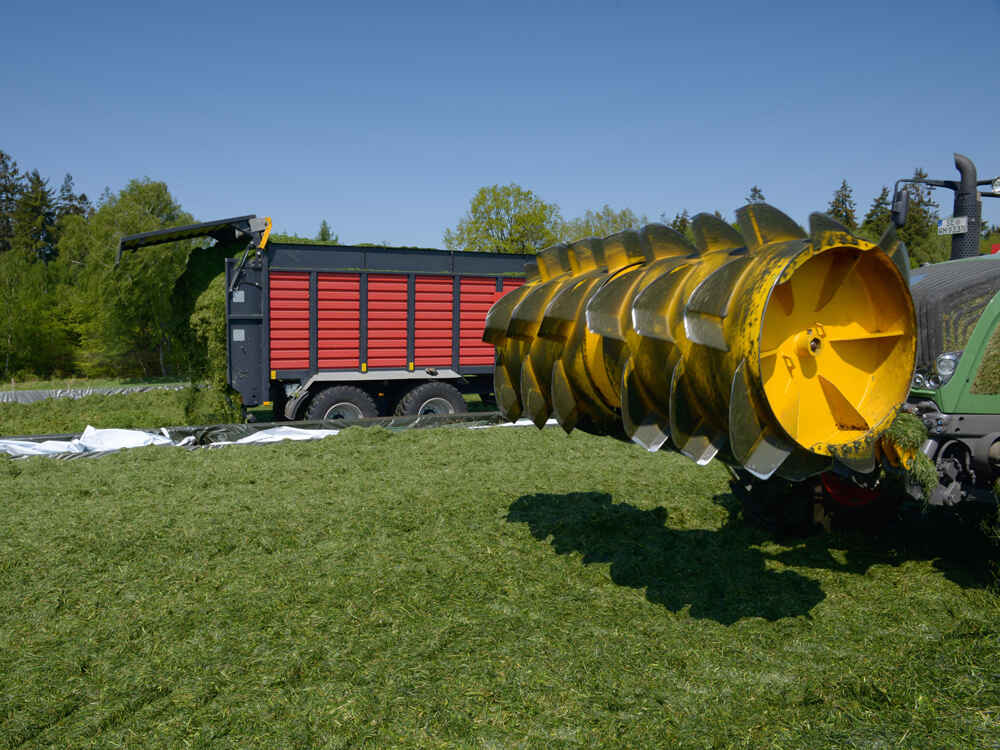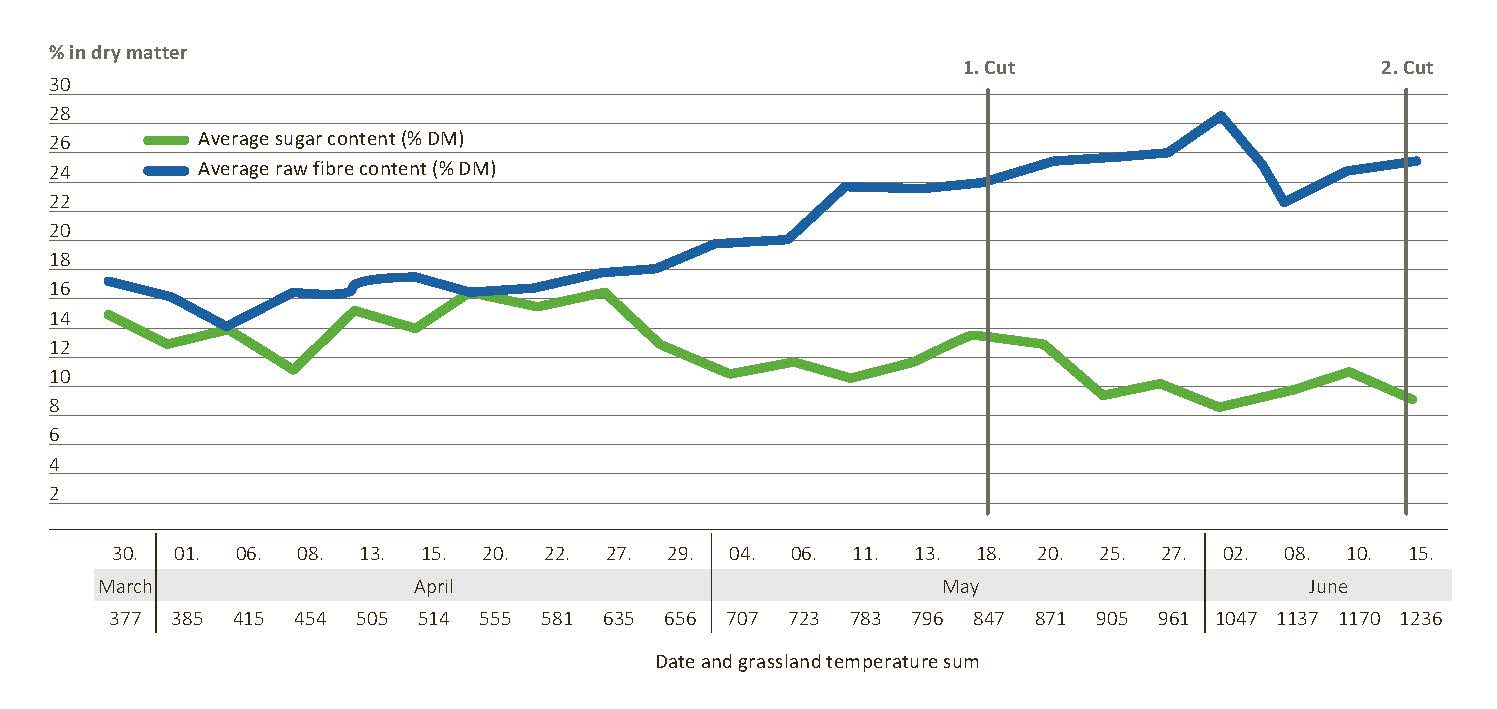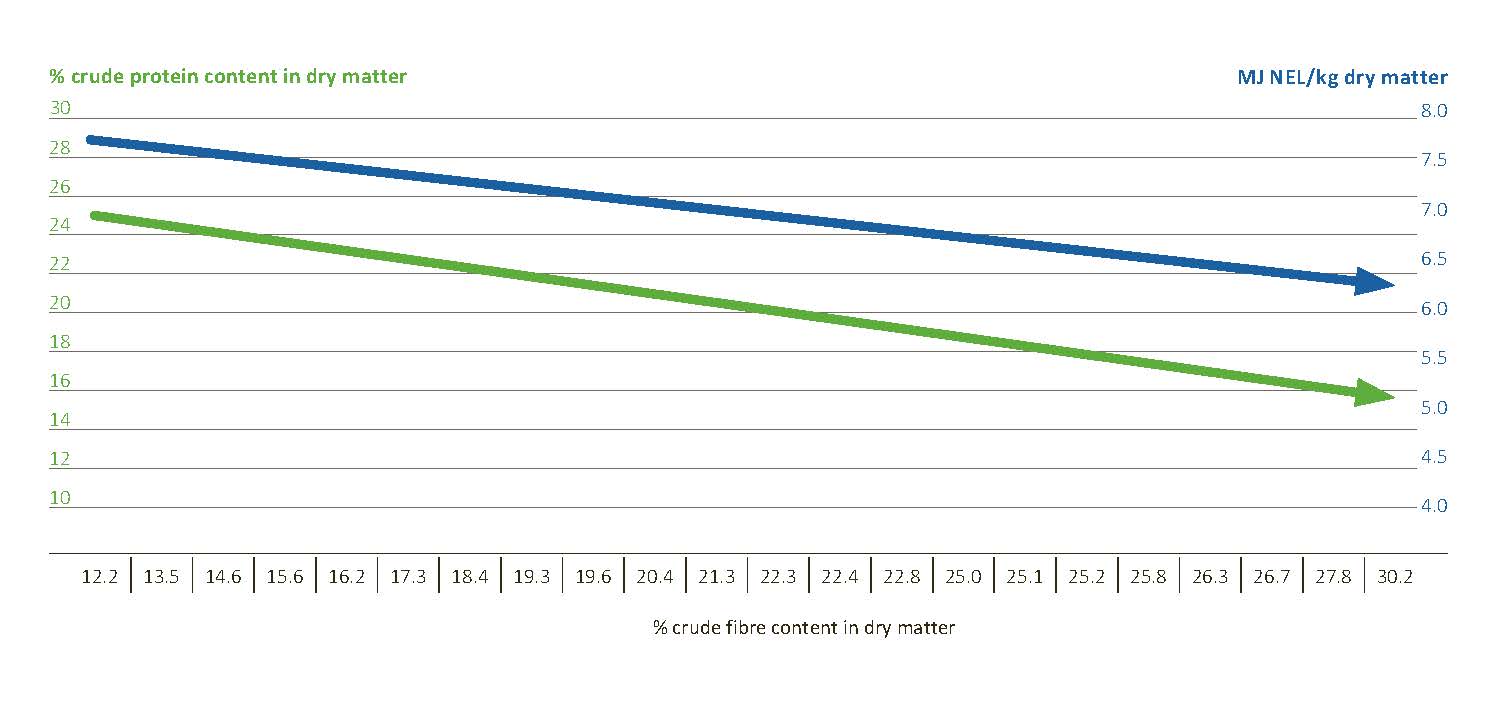
Grassland maturity checks – Choosing the right time to cut

Choosing the right time to cut is crucial for achieving outstanding quality in grass silage. An early indication of grass maturity can be obtained from the grassland temperature sum. Once the sum has surpassed 200 degrees, a sustainable start to the vegetative cycle has been reached. In 2020, this value was reached at the Hülsenberg Estate at the beginning of March. This suggests very early grassland growth.
This year, to be able to estimate the optimum cutting time more precisely, SCHAUMANN is running a cutting maturity trial on representative fields at the Wahlstedt farm on the Hülsenberg Estate. Grass will only produce protein-rich, highly digestible silage if it is within the optimum raw fibre content range.
Grasses grown on the three trial fields:
- GREENSTAR AF1 TETRA: 100% Italian ryegrass
- GREENSTAR STRUKTUR: 85% soft leaf tall fescue, 15% perennial ryegrass
- Permanent grassland with perennial ryegrass as the main variety
You’ll find the latest developments each week on this page.
Results of the maturity trial
The maturity trial on grassland ends with the second cut. The degree of maturation of three different crops was monitored, analysed and interpreted for 12 weeks. Here is a summary:
The first cut
Due to cold nights and minimal rainfall, the first cut needed a relatively long time to reach cutting maturity. In the end, it was brought in at 22.4% raw fibre, 18.9% sugar and 12.2% protein per kg DM on average. The low protein content (target value is 17–18% per kg DM) could indicate that the available nitrogen was not fully utilisable due to the dry conditions. In this case, BONSILAGE FIT G was the most ideal silage additive for utilising the high sugar content and turning it into propylene glycol during silaging.
Grass maturation
In order to demonstrate how a grass crop continues to develop after the cutting date, small sections of the fields were not mown. The grass that was left over displayed fully formed ears at around 10 days after mowing. At this point in time, the quality of the fresh grass samples had deteriorated significantly. The average raw fibre content had risen to 27.7% per kg DM and the energy content had dropped by on average 0.8 MJ NEL per kg DM. Only poor-quality silage could be produced from this crop. Such advanced maturity places higher demands on the chopping length and level of compaction since the fermentation properties of a crop worsen as its level of maturation increases. The decline in average energy content by 0.8 MJ NEL per kg DM could indicate that approx. 0.4 fewer litres of milk could be gained per kg DM from this silage. Furthermore, the significantly higher raw fibre content would fill the rumen and reduce the total feed intake. Milk performance would drop even further as a result.
The second cut
After the first cut, a mineral fertiliser containing approx. 70 kg N and 40 kg K2O was applied to all the fields. Between fertilising and the second cut, the average protein content rose from 12.2% to 17.5%, while the average sugar content fell from 18.9% to 11.5%. The development of the GREENSTAR AF1 TETRA crop shows that it made good use of the available nitrogen. The GREENSTAR STRUKTUR crops utilised the added nitrogen the best. Over both cuts, 7 kg of raw protein was formed per kg nitrogen on the basis of the dry matter yields.
The second cut was mown at 24.5% raw fibre, 8.9% sugar and 17.8% protein per kg DM on average. Due to the low sugar content, BONSILAGE PLUS was applied. This silage additive has the effect of reliably reducing pH levels and developing an adequate level of fermentation acids.
Maturity trial summary
Our detailed analysis enables correlations between the key feeding parameters to be demonstrated in a graph. Figure 1 shows the development of the average sugar content compared to the average raw fibre content. These parameters can be used to highlight the optimum cutting time. The diagram demonstrates the development of the two varieties used on the 5-year GREENSTAR STRUKTUR field and on permanent grassland. Since the GREENSTAR AF1 TETRA crop is a catch crop blend, it is not evaluated here. An increase in raw fibre content has the effect of reducing the sugar content. When both are together at the correct level, it is the optimum time to cut. If the sugar content is too high, in addition to a reduced raw fibre content it would result in lower fermentation quality and silage that is not suited to ruminants.
Figure 2 shows very clearly how energy and raw protein contents depend on the raw fibre content. Over the course of the maturity trial on grassland, the average raw fibre content of permanent crops rose from approx. 12% to over 30%. During the same period, the energy content dropped by around 15% or above. The negative effect of the raw fibre was even more pronounced on the raw protein content. In this case, a decline of over 40% can be demonstrated.
The perfect time for cutting helps to harvest excellent forage and thus to save on protein and energy purchases. This also relieves the material flow balance. In this context, the use of BONSILAGE silage additives is even more important. The BONSILAGE product range provides the optimal solution for every starting silage material to create high-quality silage and to make the best possible use of the ingredients of your crop. The grass mixture GREENSTAR STRUKTUR ensures reliable yields and good ingredients even in dry conditions thanks to its distinctive root system.

